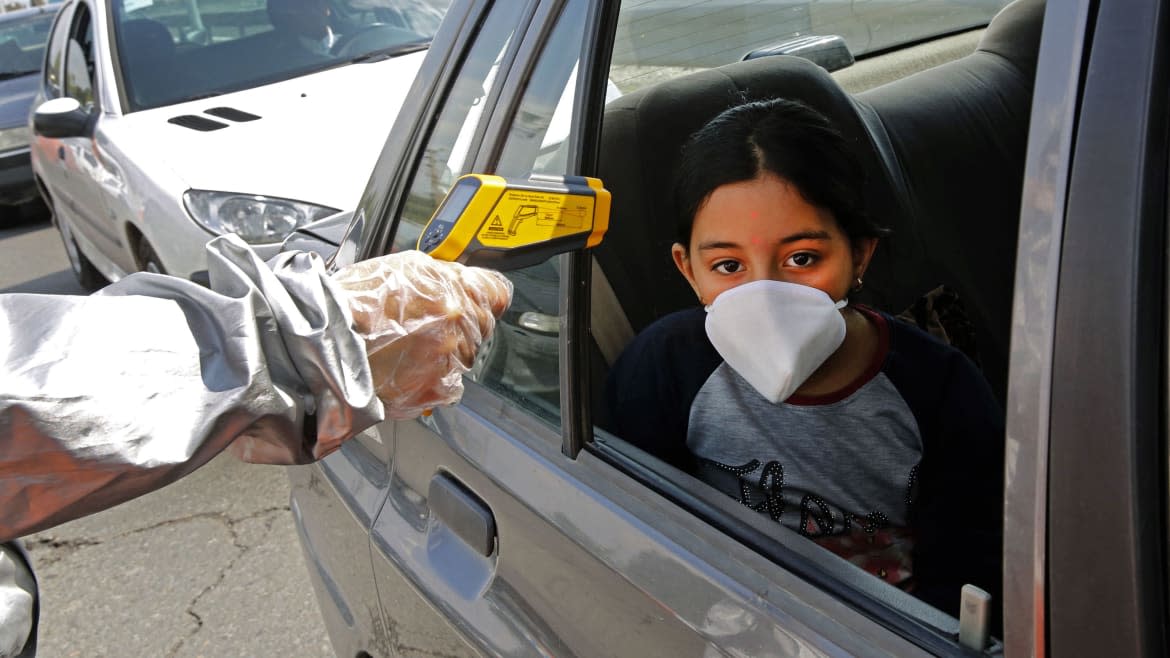Do I Have Coronavirus? A Symptoms Primer.

By now, everyone knows the classic symptoms of the 2019 novel coronavirus. But as the COVID-19 pandemic has grown, so has the medical community’s understanding of the warning signs. Here’s what to keep an eye out for.
The Basics
The U.S. Centers for Disease Control has identified three key symptoms of a coronavirus infection: Fever, cough (usually dry), and shortness of breath. The severity of these range from person to person, and not every infected person has all of them.
Infected patients have also reported a constellation of other less prevalent symptoms, according to a World Health Organization report: fatigue (38 percent), sore throat (13 percent), headache (13 percent), body aches (14 percent), and chills (11 percent).
Medical authorities say that most people experience mild symptoms that do not require a visit to the hospital. But the CDC says anyone with the following symptoms should seek medical attention: trouble breathing, persistent pain or pressure in the chest, confusion or inability to arouse, bluish lips or face. Experts say a lingering temperature of 103 to 104 should be flagged to a doctor.
What Counts as a Fever?
The CDC defines a fever as an oral temperature reading of 100.4 degrees Fahrenheit or higher. Keep in mind that our body temperatures fluctuate over the course of the day, so if your temperature is 98.6 in the morning and 99.1 at night, that does not necessarily mean you are developing a fever. Health officials note that you get the most accurate reading if you wait 30 minutes after eating, drinking, or exercising, or six hours after taking any pain reliever or fever reducer.
Other Red Flags
As the number of COVID-19 cases have grown, health sleuths have started to spot new patterns among their patients and put out guidance.
Loss of smell, taste: The American Academy of Otolaryngology Head and Neck Surgery put out an alert that “anecdotal evidence is rapidly accumulating” that these symptoms are associated with COVID-19. Anosmia, or loss of smell, has been seen in patients who tested positive but had no other symptoms, the academy said. An ENT doctors’ organization in the United Kingdom said that two out of three cases in Germany involved anosmia, and a similar proportion of South Korean patients with mild cases reported loss of smell. “There is potential that if any adult with anosmia but no other symptoms was asked to self-isolate for seven days, in addition to the current symptom criteria used to trigger quarantine we might be able to reduce the number of otherwise asymptomatic individuals who continue to act as vectors, not realizing the need to self-isolate,” the U.K. group wrote.
Digestive issues: The American Journal of Gastroenterology rushed out a China-based study examining how common digestive problems are in coronavirus patients. It found that out of 204 patients, just about half reported a symptom—most commonly lack of appetite, followed by diarrhea, with a much smaller number with vomiting or abdominal pain. “As the severity of the disease increased, digestive symptoms became more pronounced,” the researchers wrote. “Clinicians should recognize that digestive symptoms, such as diarrhea, are commonly among the presenting features of COVID-19, and that the index of suspicion may need to be raised earlier in at-risk patients presenting with digestive symptoms. However, further large sample studies are needed to confirm these findings.”
Pink eye: The American Academy of Ophthalmology notes there are scattered reports of COVID-19 presenting along with conjunctivitis, better known as pink eye, and at least one study suggests the virus is present in eye secretions. Separately, a nurse at the coronavirus-ridden Washington State nursing home Life Care Center told CNN that she saw what she described as red “allergy eyes” in all of her elderly, infected patients—although there is no official confirmation that’s a symptom.
What About Kids?
Children infected with coronavirus can exhibit mild and more generic symptoms. The CDC describes them as “cold-like”—fever, runny nose, cough, vomiting, and diarrhea. A study of 2,143 pediatric patients in China, published in the journal Pediatric, found 90 percent of those who had the coronavirus had either no symptoms or mild or moderate illness. The study did find that the younger the child, the more likely they were to develop serious complications, with infants being at the highest risk. But there was only one death—a 14-year-old—in the study group. “Why most of the children’s COVID-19 cases were less severe than adults’ cases is puzzling,” the researchers wrote.
Get our top stories in your inbox every day. Sign up now!
Daily Beast Membership: Beast Inside goes deeper on the stories that matter to you. Learn more.

 Yahoo News
Yahoo News 
